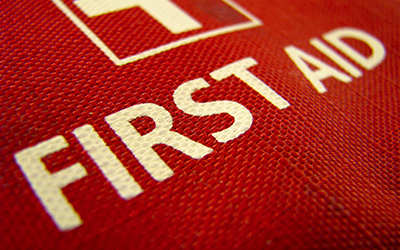In the 1800s, when someone was wounded or injured, the only way anyone could help them was to send someone to fetch the nearest doctor. The problem is that the nearest doctor could be a great distance away. Minutes or hours could pass before the injured person received any help, and each passing moment could be crucial to their survival. Finally, in 1888, Robert Wood Johnson came up with a solution to this issue. He bundled a variety of products his company, Johnson & Johnson, made and began to package them in boxes. Today we know these boxes as first aid kits.
What Are First Aid Kits?
First aid kits are storage containers filled with useful supplies you can resort to in the event of a medical emergency. They contain basic equipment you can use as a first response to address different types of injuries or sicknesses. Many first aid kits come in the form of a portable box or canister that can be moved from place to place with ease. In professional facilities, you will usually see them hanging on a wall for easy access, and in homes they are often kept somewhere in a bathroom.

Why They’re Important
The importance of first aid kits cannot be understated. Accidents happen from time to time, and having first aid kits around is a good safety measure to ensure that when an injury does occur, there is equipment on hand to deal with it. They allow you to provide mild to moderate health care until more professional assistance can be reached. The fact is that there is not always a hospital or emergency room nearby, and in these cases, a first aid kit can be extremely useful.
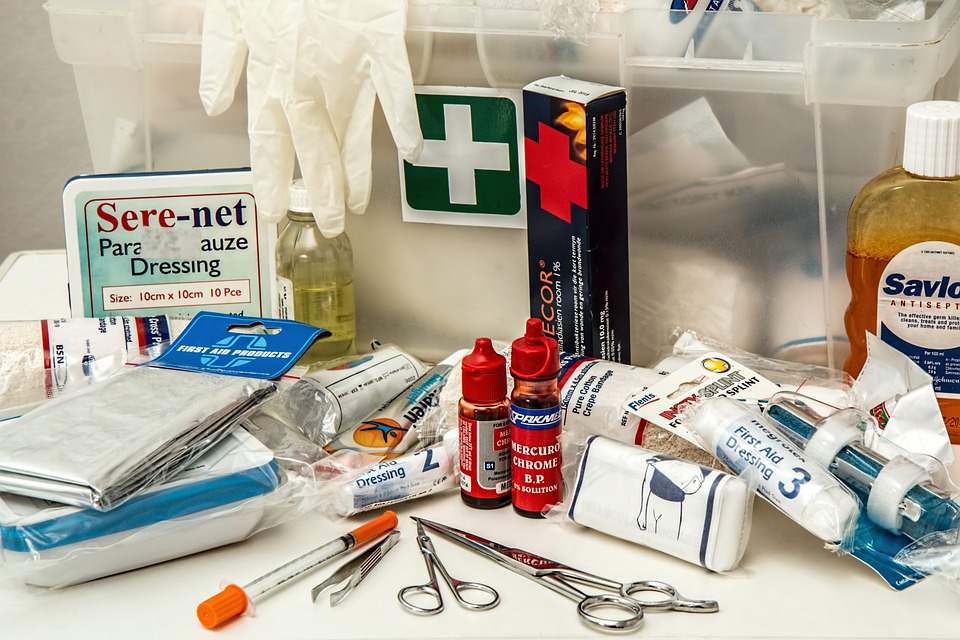
For instance, taking a first aid kit with you on a hiking or camping trip could save your life. In the woodlands, there may not be any professional medical services nearby. In the case of an accident, first aid kits are essential. Without them, you would have no way to handle injuries. You can use your first aid kit to address injuries until you can get proper help.
Top 10 Items to Have in a First Aid Kit
Every first aid kit is unique and contains different items, but there are a few items that everyone should have in their kit. Here is a list of the top ten essential items you should keep in your first aid kit:
1. Personal Medications
One of the most essential items you need in first aid kits is any personal medication you or anyone with you might need. In the event that you need extra medicine or forgot to bring your medicine with you, you will be able to rely on an extra stash you have stored in the first aid kit. And, even if you do have your personal medications with you, you can consider this a backup supply just in case you misplace your main supply. Murphy’s law states that anything that can go wrong will go wrong; thus, it’s a good idea always to have a backup plan to resort to in case things go awry.
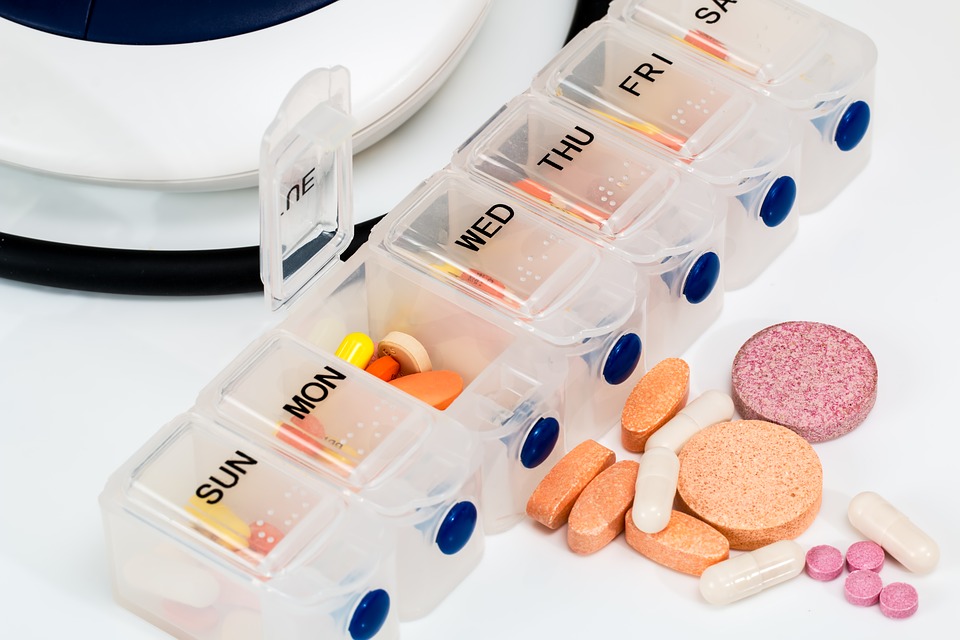
2. Pain Relievers
Alongside specific medications for certain individuals, you should also pack basic pain relievers. First aid kits should always include medicines such as ibuprofen (Motrin, Advil) or acetaminophen (Tylenol) to help deal with pain if there is an accident. In the event that someone has an injury, pain relievers will go a long way to help them cope with the injury. In addition, these medicines will also help to tame a fever if someone gets sick. These aren’t the most powerful medications, but they are extremely useful since they have so many applications.
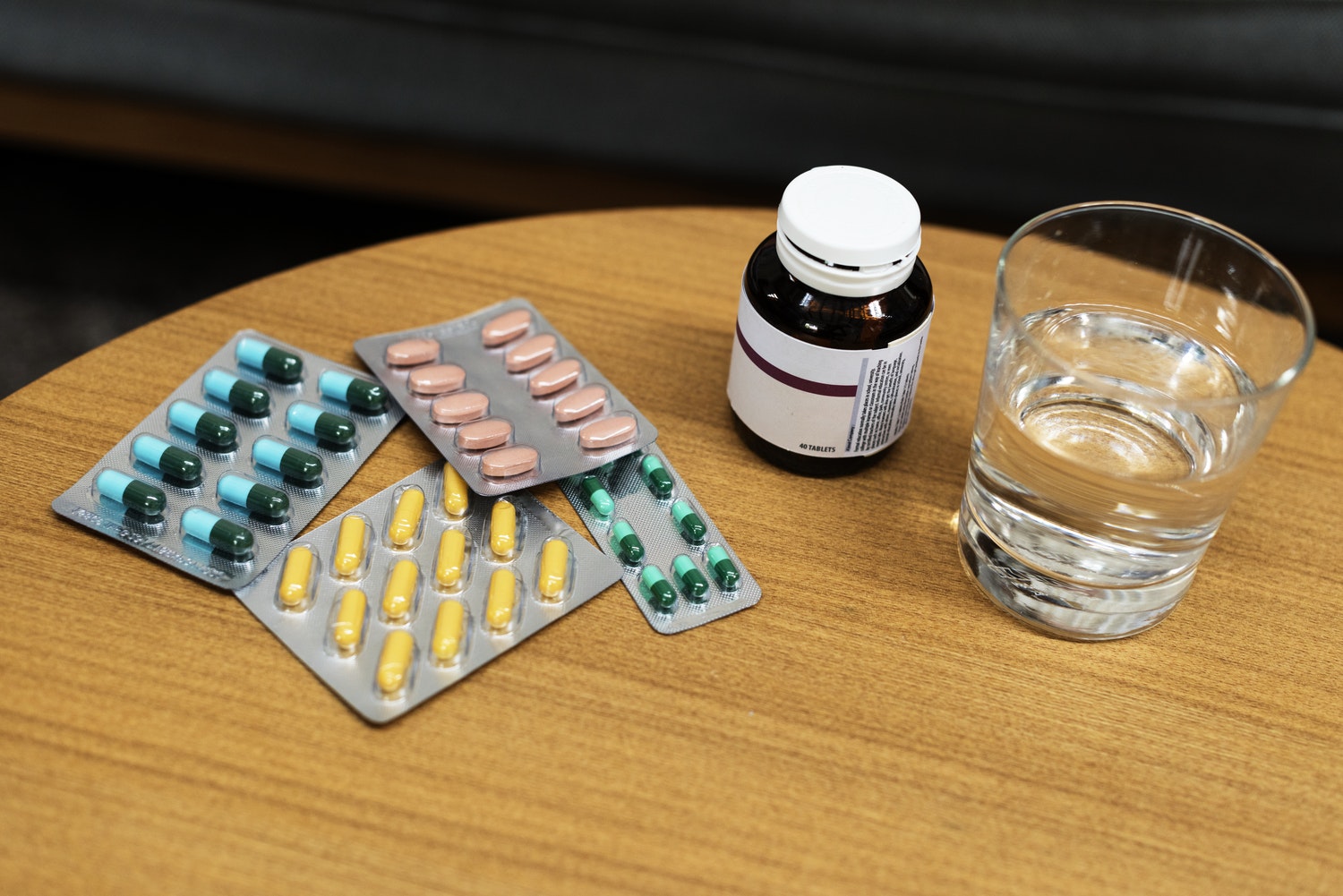
3. Antiseptic Wash
You should always clean wounds thoroughly to minimize the risk of infection. Part of the process of cleaning a wound is making sure it is sterile, and in order to sterilize it, you need to have some antiseptic wash with you. An anti-bacterial cleanser will help you achieve this, and this needs to always be included in first aid kits. You can use it to wash your hands and kill any bacteria when you are dressing a wound. In addition, you can use it on the wound to make sure it is clean. It’s important to stop any risk of infection, as an infection will only make matters worse and can have grave consequences.
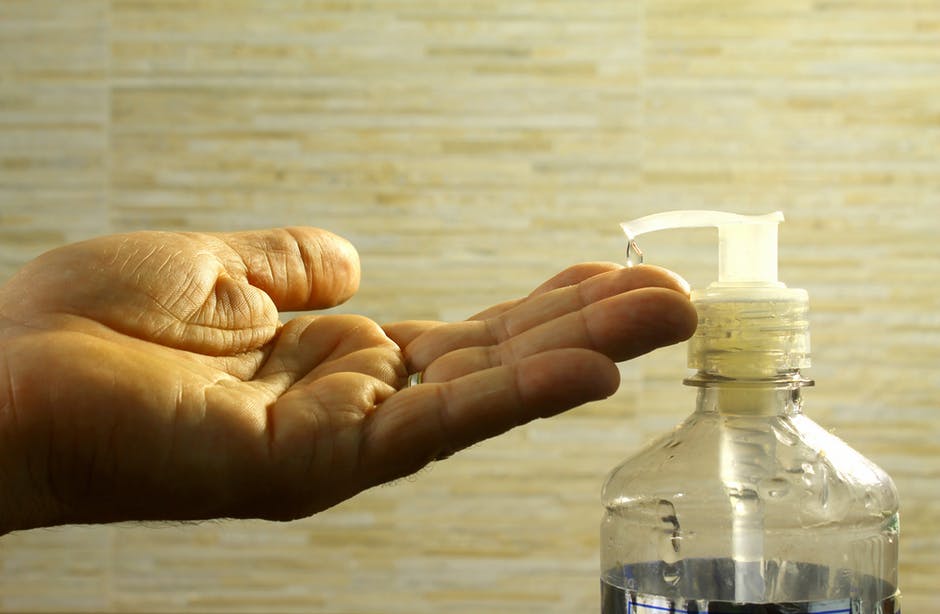
4. Rubber Gloves
Washing your hands isn’t always enough, and this is why rubber gloves also make a great addition to first aid kits. Just as trained doctors use gloves during any procedure, you should apply the same practice when applying first aid. Gloves are used to assist in stopping the spread of germs. When dealing with injuries (especially wounds), any measures you can take to stop the spread of germs is of great importance. You want your environment to be as clean as possible. Although we can’t see them, germs are everywhere. You should use gloves to ensure that germs from your hands are not transmitted into any wounds.

5. Antibiotic Ointment
Another key component of first aid kits that helps you deal with infection is antibiotic ointment. Ointments come in liquid form and are designed to stop the growth of bacteria. There are a variety of ways you can use an antibiotic, especially when dressing wounds. You can apply some of it to whatever dressing you are using before you cover an injury. One of the most popular brand names of antibiotic ointment available on the market is Neosporin, which contains bacitracin (the main ingredient that stops infections).

6. Cotton Balls / Swabs
First aid kits also need some cotton balls or swabs, which help when you are trying to clean a wound. Cotton balls have many uses, but in first aid scenarios, they are a go-to tool for applying the antibiotic ointment. To use them, you take a cotton ball and hold it to the top of your bottle of ointment. You then quickly turn the bottle upside down while holding the swab in place. The swab will soak up some of the ointment, and then you quickly turn the bottle back right side up. You can then use this swab to clean wounds or whatever else you may need cleaned.
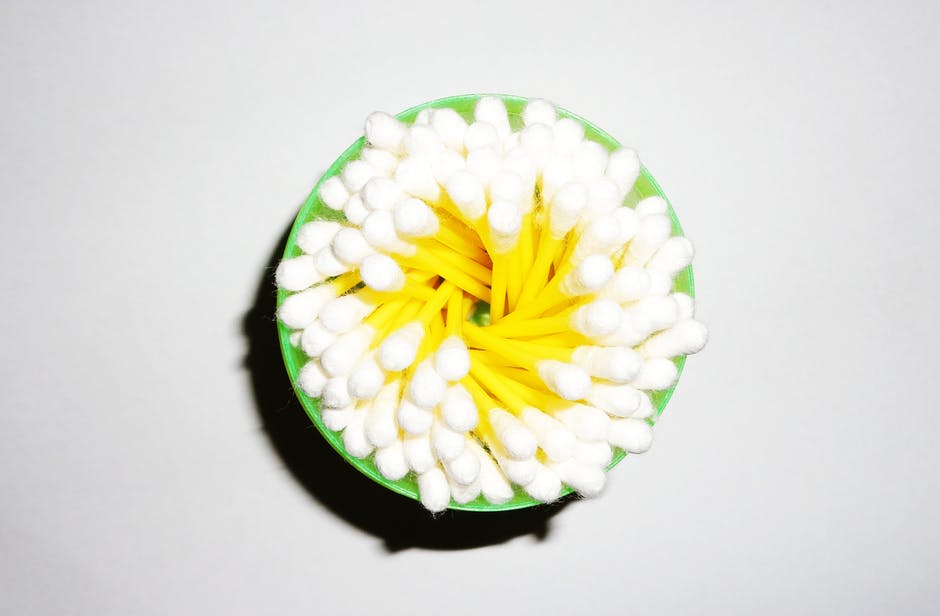
7. Band-Aids
First aid kits are not complete without some simple band-aids. You can use band-aids to cover very mild cuts or stings after you clean them to help further prevent infection. These will cover the wounds and help keep any bacteria out. In addition, they help protect the affected areas from re-injury by making sure they are not exposed. Re-injury will make the healing process much slower and has the potential to make the initial injury even worse. For this reason, it’s always a good idea to make sure you secure any wounds with a band-aid until further assistance can be given.

8. Gauze Pads
Gauze pads are a step up from band-aids and are another essential for first aid kits. Band-aids are generally small and will not completely cover up larger wounds. This is where gauze pads come in. They are much larger and can help you deal with more severe injuries. In addition, they help control bleeding very well and will soak up large amounts of blood. You should keep several of these in first aid kits as you can layer them together to cover wounds of pretty much any size.

9. Elastic Bandages
Gauze pads do not have any adhesive and will not stick to the skin on their own. You can, however, keep them in place with elastic bandages. Elastic bandages are a staple of first aid kits because you can do so much with them. You can wrap them around gauze pads and fasten them to keep them in place, use them to secure a cold or hot pack in place, or you can even use them to create a sling. They are fairly strong and are a multi-purpose item that everyone should include in their kit.
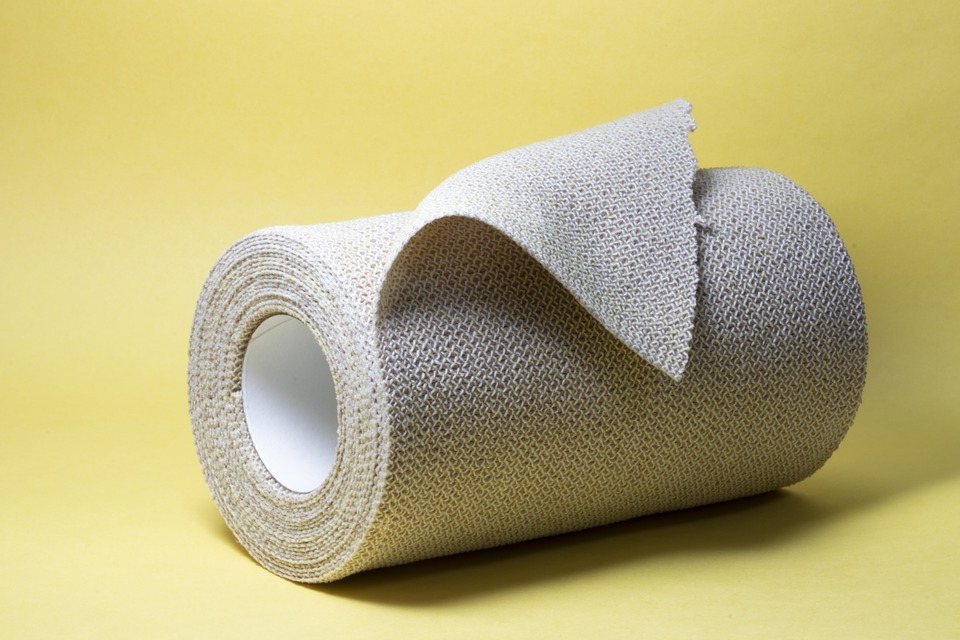
10. Scissors
First aid kits are incomplete without a pair of scissors. As mentioned above, elastic bandages are pretty strong and extremely difficult to tear. The easiest way to cut a bandage to length is with a good pair of scissors. You can also trim gauze pads to conserve them if needed. Everyone’s first aid kit will be different, and depending on what you put in yours, you’ll find that scissors can help you modify some of your supplies. For example, if you add medical tape to your kit, scissors will also help with cutting that as well. A pair of medical scissors is a worthy investment for all first aid kits.
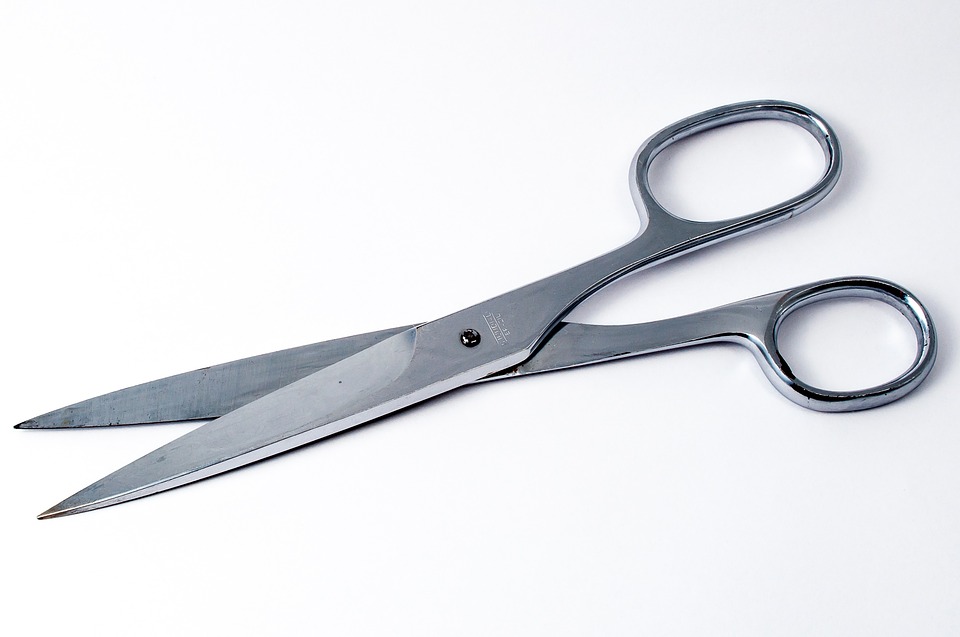
Conclusion
First aid kits are your first line of defense against injuries in the unfortunate event that an accident occurs. They should be kept in every home and business and should be taken with you when you travel because you never know what may happen. Many people do not give them any thought, believing that medical help will be right around the corner wherever they go. However, this is simply not the case. Keeping a first aid kit around is a great safety measure that just may end up saving someone’s life one day.

